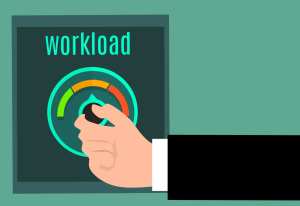Understanding the Health Check - Phase 7: Constraint Management - Questions
Question One
Do you know which resource capabilities gate your daily profitability?
Health Check Answer Options
- Our bottlenecks vary daily - we have 'wandering bottlenecks' - it's hard to keep up
- We know where our constraints are and we move resources around to manage constraints
- We can schedule our entire operation by scheduling one or two resource types
Clarifications
- If you have not achieved Phase 7, your operational supervisors will be hunting for jobs and expediting them through your processes.
- It is hard to create a stable smooth flow of work as it seems like people’s focus keeps changing as the perceived bottlenecks in the process move.
- As you progress with Phase 7, your practices evolve from expediting to proactively resourcing the rising queues in front of your bottlenecks.
- Achieving Phase 7 means you have thinned the work in progress queues in front of operators and are scheduling the release of new work to replenish the queue of work in front of your strategic bottleneck (known as your constraint, or the most significant flow-limiting step in your process).
Question Two
Does the workload ‘surge’ create waves of work?
Health Check Answer Options
- Yes, the waves of work are disruptive and wasteful
- Mostly we control the flow well, with occasional wasteful surges and disruptions
- Our work flows smoothly and efficiently, with little waste
Clarifications
- If you have not achieved Phase 7, surges of work create large transitory queues in front of operators.
- It becomes difficult to get work finished on time due to long queue lead times propagating and extending through the business.
- As you progress with Phase 7, you will have processes in place to monitor and resource the rising queue.
- However, overlapping surges are still a challenge and can cripple business performance. Achieving Phase 7 means that your constraint-scheduling practices smooth out the flow and prevent surges from creating disruptive and chaotic waves of work.
Question Three
Do you get ahead on some jobs, behind on others?
Health Check Answer Options
- Yes, we can often get ahead (e.g. getting clearances before the ship arrives), yet we are often also under pressure
- We get ahead when we can, but reliably refocus on short term deadlines as they approach
- Our work flows smoothly and efficiently, rarely early, rarely late
Clarifications
- If you have not achieved Phase 7, operators will be acting in advance on some jobs and playing catch-up on other jobs.
- Your people are always busy and urgent jobs often get trapped whilst operators finish non-urgent jobs.
- As you progress with Phase 7, your work mix changes to prioritise the jobs as their deadlines approach.
- Achieving Phase 7 means work is scheduled and released based on its completion order.
- Work is released so that the constraint resource is able to complete jobs reliably, and in a timely manner, after taking into account uncertainties in the job.
- You are managing your system’s overall performance rather than managing the performance of an individual job.
Question Four
Do people have a lot, or a little, to focus on?
Health Check Answer Options
- There's always a huge queue in front of everyone; it can be hard to focus
- We can automatically highlight what jobs are actionable or urgent, in the long list of jobs;
- The actionable queue in front of each resource is short, tight, focused
Clarifications
- If you have not achieved Phase 7, your operators will have a large queues of work in front of them and they will be trying to manage this queue as efficiently as possible.
- It is common for jobs to sit in these queues for extended periods of time and for the operators to be searching the queue for work they can advance.
- As you progress with Phase 7, your system will highlight to the operators which jobs they can progress and your operators will be clearing these jobs as fast as they can.
- Achieving Phase 7 means the queue of work sits awaiting release rather than in front of individual operators.
- As a result, operators have a small queue of ready-to-start work in front of them that they rapidly advance.
Question Five
Do you have time for cross-training and multitasking?
Health Check Answer Options
- There's never enough time and it's hard to schedule in training time
- We do train, but we have to add extra people to create the capacity, and that's expensive
- Training and cross skilling is scheduled in, and we have capacity for it
Clarifications
- If you have not achieved Phase 7, your people are trained for specific roles, and the queues of work mean they are always busy.
- The pressure to add more resource is ever present.
- As you progress with Phase 7, your people are doing some training for other roles, yet you are having to make space for this training in the operator’s otherwise busy day.
- Often, you have to bring in additional resources to cover for those being trained or you have to deploy overtime to catch up on work that was deferred.
- Achieving Phase 7 means the short queues are exposing spare capacity that you can cross-train and redeploy to resource any rising queues, and to cover for others who are being trained.
